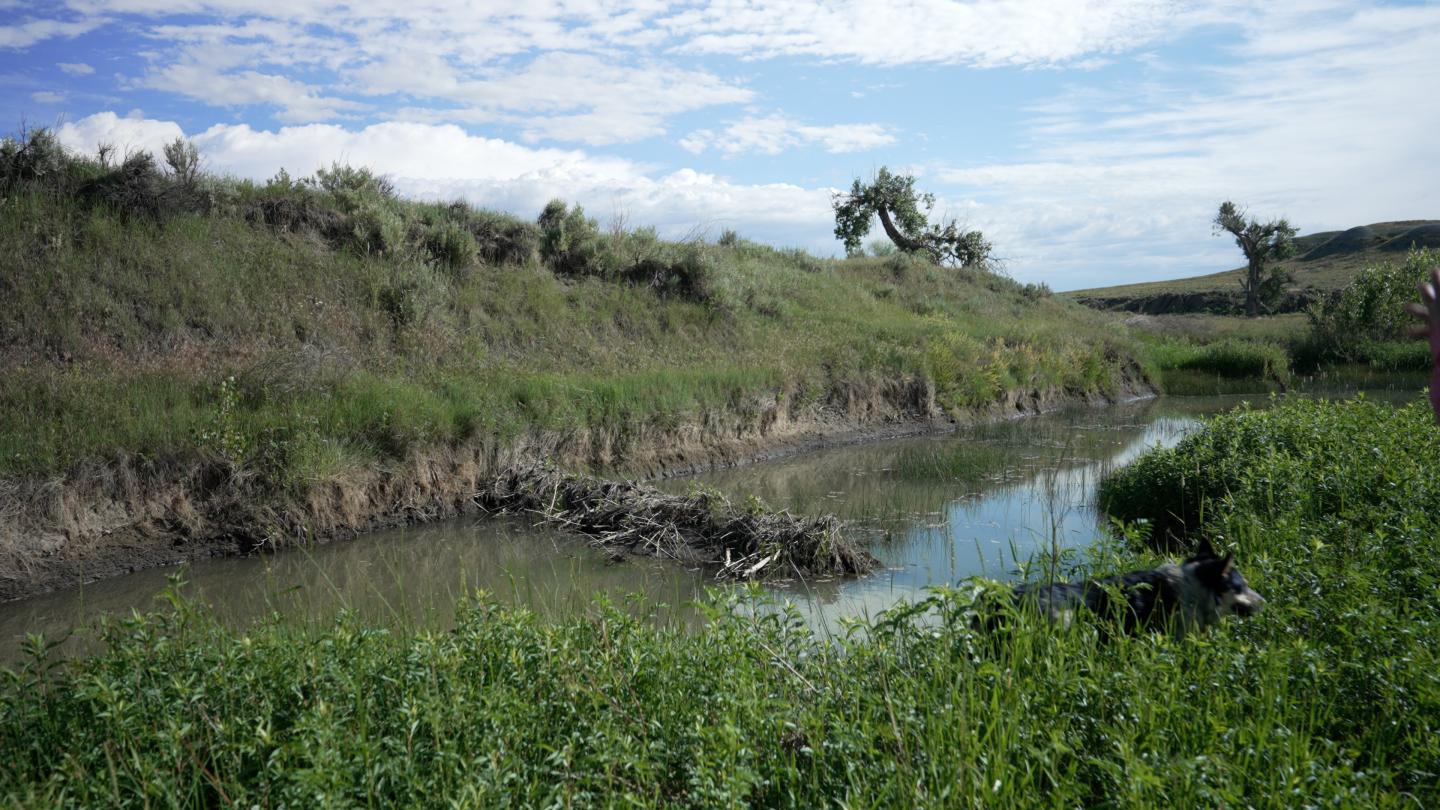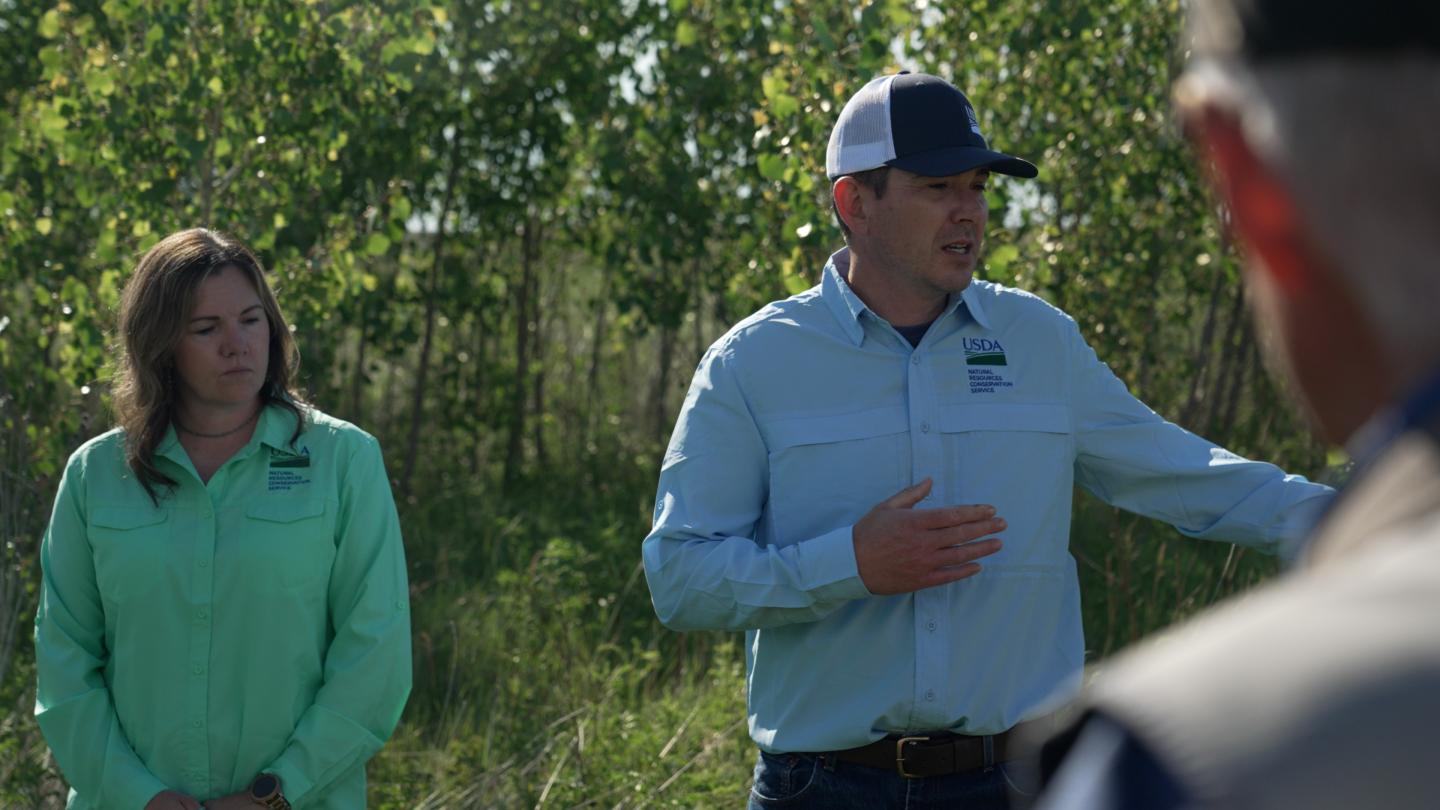Conservation and Innovation: Reseeding a Ranching Legacy
Rancher Brenda Brady stands at the helm of an agricultural legacy, steering her family’s ranch in Petroleum County, Montana, into a new era.
Rancher Brenda Brady stands at the helm of an agricultural legacy, steering her family’s ranch in Petroleum County, Montana, into a new era. Having taken over from her parents, Jim and Diana Brady, Brenda continues to steward the land with the help of a variety of partners including, USDA Natural Resources Conservation Service (NRCS), Bureau of Land Management (BLM), World Wildlife Fund (WWF) and Winnett ACES (Agriculture, Community, Enhancement and Sustainability).
Through generations of hard work, innovation and partnership, the family has transitioned to a more sustainable operation, passing down their passion for conservation and ensuring success for future generation. These conservation principles were passed down from Brenda’s grandparents. Managed grazing and caring for their grassland resources were things that have been important to the Brady family for generations.
A Legacy of Ranching
The Bradys began ranching in 1914 when Brenda’s great-great-grandparents homesteaded in the area. After World War II, her grandfather, Earl Brady, bought property in Petroleum County and started what is now the Brady’s ranch along with his wife, Virginia. In 1978, her parents, Jim and Diana, moved home to Winnett after college and bought part of the ranch. Over the years, they have been able to buy additional property and have taken over management of Earl’s property.
In 2019, Jim and Diana retired and transitioned the ranch by leasing it to Brenda and her sister, Laura Nowlin. Brenda operates one part of the ranch and Laura and her husband, Levi, operate the neighboring part of the ranch. Both Brenda and the Nowlins are dedicated to sustaining the family ranch.
After a career off the ranch, Brenda moved back in 2015 and now lives in her grandparents' 1914 farmhouse and is maintaining a strong connection with her family’s history. Brenda and the Nowlins worked for Jim and Diana before taking over management and leasing the ranch from their parents.
Reflecting on his daughters’ return to the ranch, Jim says, “I think that it was really important that they knew what was ahead and that they wanted to do it.” The family ethos of hard work, responsibility and caring for the land was instilled early on. Brenda and her sisters grew up working on the ranch and developed a deep connection to the landscape.
Visions for the Ranch
Stewardship and ideas about conservation began with Brenda’s grandparents. In those early years, the Bradys understood the need to rest pastures and manage their forage base to maintain a sustainable operation.
Since then, the Bradys have utilized many NRCS conservation practices to address resource concerns on their ranch with the help of local NRCS field staff. In the past, Supervisory District Conservationist Nikki Rife and now in the present District Conservationist Reba Ahlgren, and Supervisory District Conservationist Mike Lucas, have been instrumental in guiding the Bradys through various projects.
A Land Made for Grazing
Originally a combination of farming and ranching, the operation transitioned exclusively, to a grass-based grazing operation under the tenure of Jim and Diana. This was influenced by a vision to reduce inputs, improve soil health, increase forage production and improve wildlife habitat. “This land is better suited for grazing cattle. One year it can be a drought, the next year it's floods and grasshoppers.” Jim explains of the area.
In 2014, the Bradys and NRCS collaborated to convert marginal cropland back to grass and improve grazing infrastructure through fencing and stock water developments. Jim recalls, “it took a couple of years to get grasses established and this meant we couldn’t graze or utilize those acres during that time.” Nonetheless, with technical and financial assistance from the NRCS, the Bradys smoothly incorporated these acres in their rotational grazing plan.
Brenda and the Nowlins completed the conversion back to grassland as they took over. They have worked with numerous partners to then add cross fencing and develop more water infrastructure to be able to manage the grazing and use grazing to foster the establishment of the grasses.
Grass Seeding
The Bradys' conversion of cropland to pasture was one of the larger seeding projects undertaken in the area. “From 2015 to 2019, close to 4,000 acres were reseeded back to perennial vegetation,” Ahlgren says. With help from NRCS, seed mixes were developed to meet the Brady’s grazing objectives. Jim shares, “NRCS recommended certain species. They knew the plants. They knew what was native.”
The diverse grass mixes recommended by the NRCS have enhanced diversity and provided a stable forage base for their cattle. This not only helps in maintaining the ranch’s goal for livestock production, but also supports habitat needs for a suite of wildlife species. This large-scale seeding had significant impacts for the Bradys' grazing management. “The seedings were spread out over multiple years,” Ahlgren says. “We typically have a two-year growing season deferment; we strategize timing of the seedings to mitigate financial impacts of the lost grazing opportunity during the period of establishment.”
Cross Fencing
Fencing has been crucial for managing grazing. By implementing cross-fencing, the Bradys have been able to better rotate cattle, prevent overgrazing and rest pastures. A significant portion of newly planned cross fences have been permanent electric fences. These electric fences have proven to be more wildlife friendly and have allowed for more adaptive grazing management when paired with temporary electric fence. “Another benefit of the permanent electric cross fences is that the system allows Brenda to tap into permanent electric lines with temporary electric fence all using the same charger,” according to Ahlgren.
To further address threats to wildlife on the ranch, white sage grouse markers (vinyl tabs) were installed to reduce risk of sage grouse collisions in high-risk areas and close to grouse leks or “dancing grounds." Wire heights were also adjusted to allow for better wildlife passage across the landscape. New cross fences have all been installed to be wildlife friendly.
Water Infrastructure
Water infrastructure and development of stockwater began in the early 1970s. The Bradys knew that installation of stockwater systems was key in allowing for proper grazing utilization, rest and rotation of pastures. Jim Brady explains as he stands next to a recovering Boxelder creek, “We needed to have off-stream water. We started doing pipeline with our cross fencing so we could hold the cows out of here [riparian areas] so they wouldn’t damage things.”
“We helped with the pipeline design,” Ahlgren says. “This system started in 2015. A lot of teamwork has gone into implementing these conservation practices.” Over the years, a variety of partners have contributed to additions to the original system.
Riparian Restoration
In addition to developing off stream water, Brenda and her family have focused on improving riparian function and addressing degraded riparian areas on the ranch. In partnership BLM, Winnett ACES, WWF and PF, beaver mimicry and Low-Tech Process Based Restoration has been implemented on riparian areas managed by the Bradys. While these structures are meant to mimic beaver activity, beavers often capitalize on the opportunity to move back in and add to these man-made structures.
Beaver dam analogs (BDAs) have a remarkable impact on riparian areas, mimicking natural beaver dams, they create wetland habitat, support diverse wildlife and raise the water table. “We’re restoring water to the landscape,” Lucas explains. “This improves habitat and creates a more stable and resilient riparian area. We’re seeing an increased forage base, flows that extend later into the year and establishment of woody plant species. There is also reduced flood risk for downstream neighbors.”

Overcoming Challenges
Ranching is not without its challenges. Extreme weather conditions in Montana test resilience, but the family’s innovative approach to land management has paid off. Jim notes, “It’s an investment being a rancher. When you’re in an area where the weather is as extreme as it is here, it can cost you.”
The NRCS partnership has been instrumental in overcoming many of these challenges. Jim started working with the agency as far back as 1978 and has since seen NRCS expand its offerings. “They’re very helpful and good people who understand what we’re trying to do.”
Speaking of the Bradys' conservation projects, Lucas explains, “It’s a process you need to do in phases and over multiple years. First comes the seeding, then the water and then the fence. If a seeding fails, the entire process can be set back a year and cost a producer many thousands of dollars. This system approach must be carefully planned out and it must be the producer’s vision.”
Lucas adds, “The Bradys' ability to adapt and implement these conservation practices despite the harsh conditions demonstrates their dedication and vision. There success serves as an example for other ranchers in the region.”

The Future of Brady Ranch
Looking ahead, Brenda and her family are committed to continuing the sustainable practices that have revitalized their ranch. The improvements to the land have not only benefited their cattle operation but also supported local wildlife, including sage grouse and other species. “Certainly, it’s going to help the wildlife. I want to be a good conservationist and a good rancher. To be able to come and look at this—to me it’s very satisfying,” Jim expresses.
Brenda echoes her father's sentiment, emphasizing the broader impact of their efforts. “It’s benefiting the wildlife but it’s also improving—we live downstream from here and so it’s improving all the way along that waterway.”
From an NRCS perspective, Ahlgren shares, “The Bradys have shown with commitment, partnerships, and the right support, it is possible to achieve a sustainable ranching operation out here.”
Because of this, the Bradys have been able to underscore, through their actions, the importance of conservation land management paired with innovation.
“The change in the land is the biggest deal to me,” Jim says looking toward his cottonwood and willow trees. “I want us to leave things in better condition than when we found it.”
Like her father, Brenda enjoys certain aspects of the land, having grown up and spent most of her life there. “One of my favorite things is the drive home and coming over the hill and seeing my grandparents’ house which now my home. Especially this time of year (June) because it’s so green. I also really enjoy just being out in the grass and admiring the landscape.”

